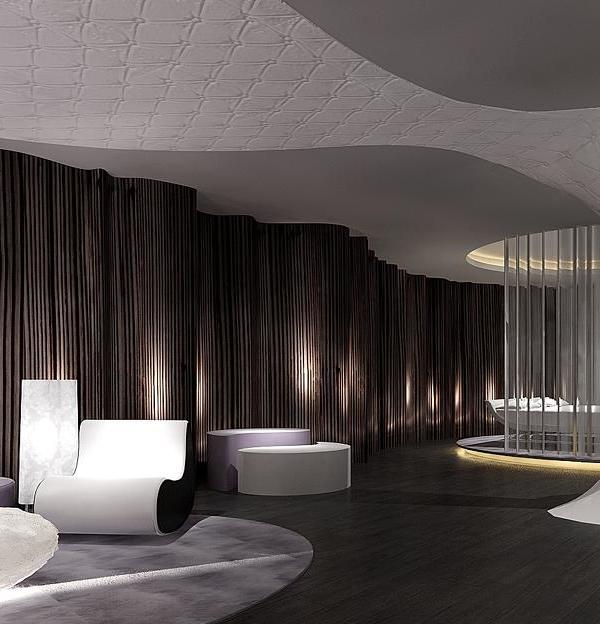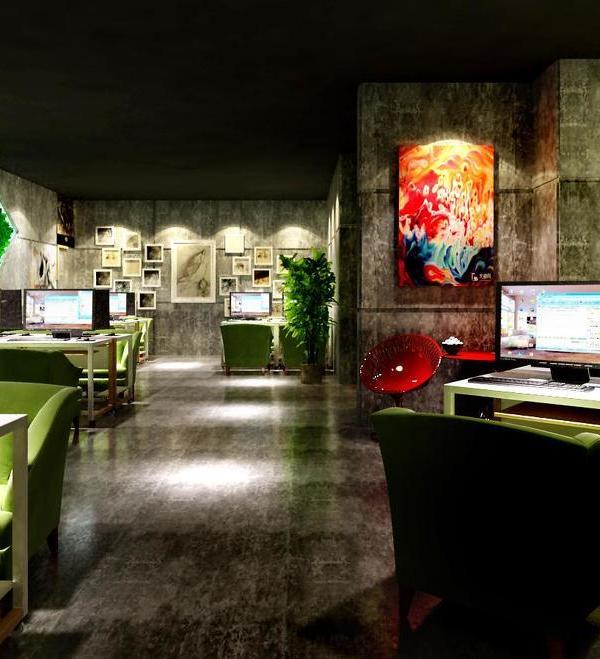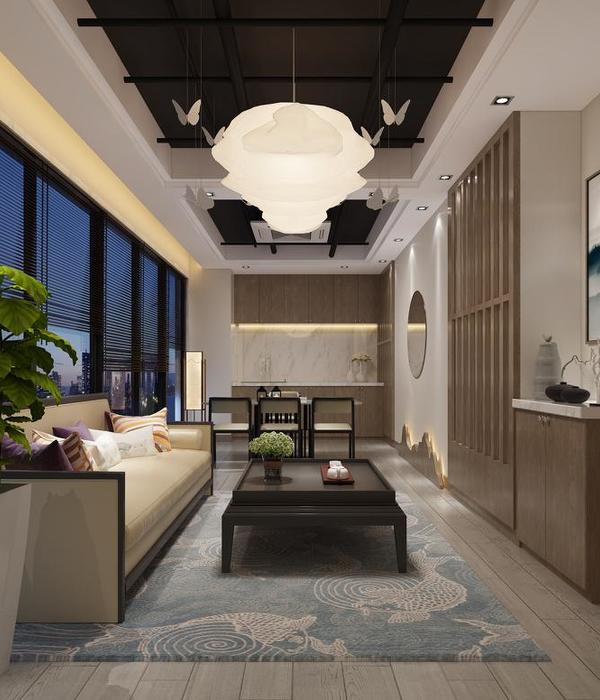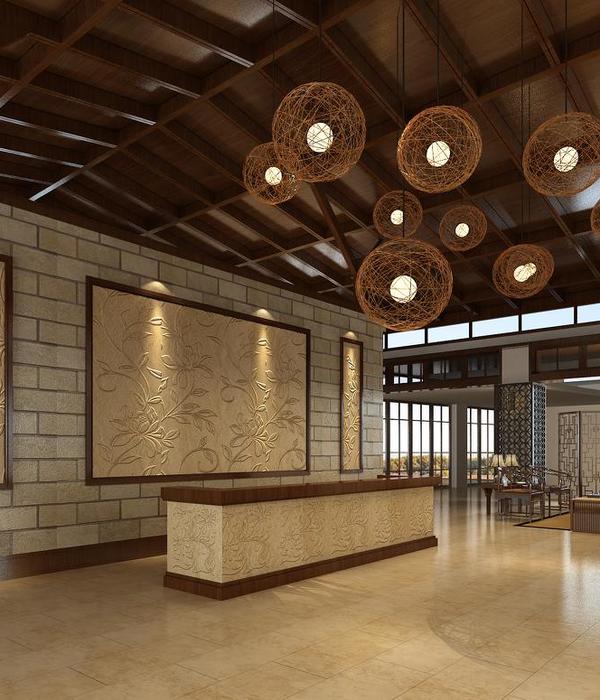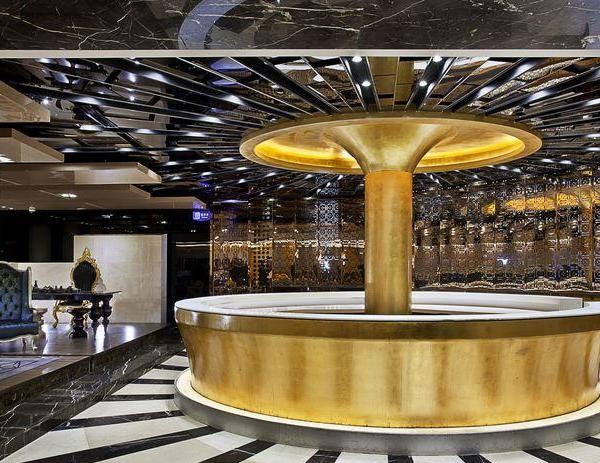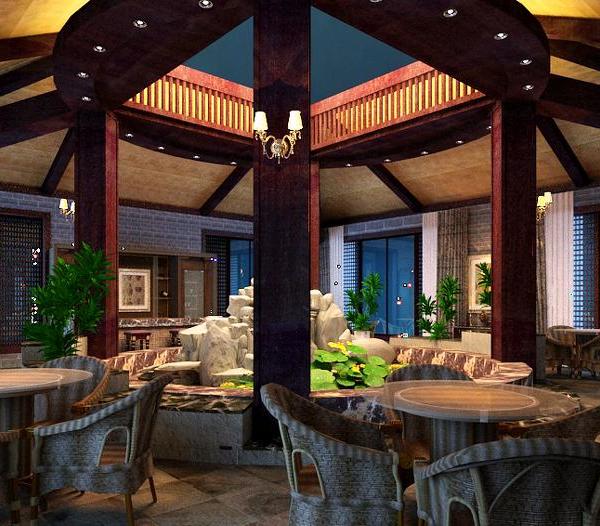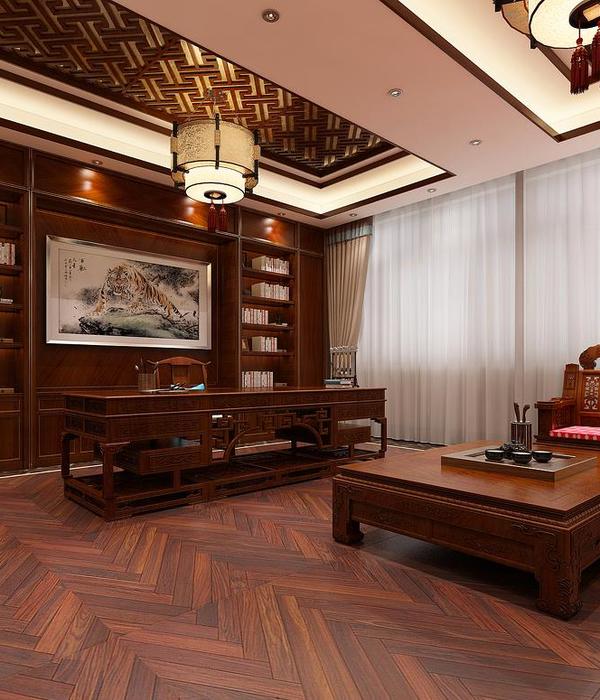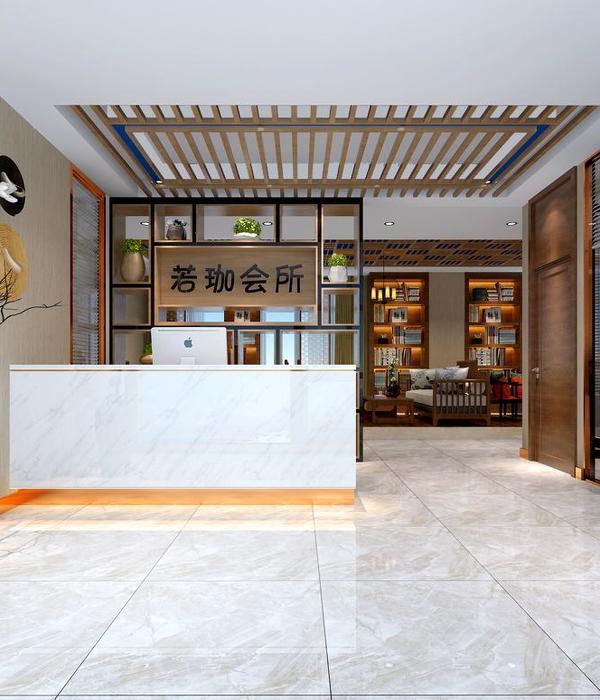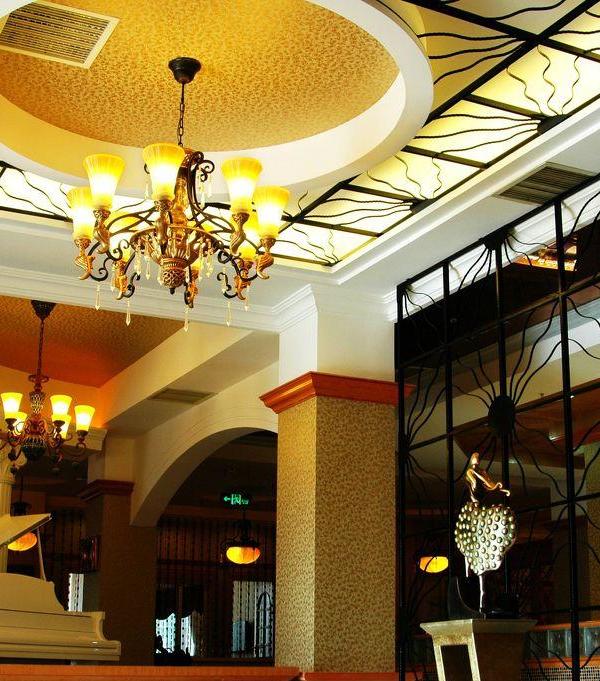▲服务建筑大隐于景观,充分与周边环境融合,the service building is hidden in the landscape and fully integrated with the surrounding environment ©Holi Photography
▲充分利用市政公路桥下空间打造儿童乐园,Utilising space under municipal road bridges to create children’s playgrounds ©ZC Studio
▲南岸林荫课堂,借势场地高差巧设户外座椅,The South Shore Shade Classroom, which takes advantage of the site’s elevation difference to create outdoor seating ©Holi Photography
▲北岸森林步道,提供奇妙的空中行走体验,North Shore Forest Trail, offering a fantastic aerial walking experience ©Holi Photography
▲生态多样性与栖息地修复,biodiversity and habitat recovery ©上海市园林设计研究总院(左3)-Holi Photography(右1)
▲红树迷宫眺望平台,Mangrove maze overlook platform©ZC Studio
▲利用潮汐湿地打造红树迷宫,Using tidal wetlands to create a mangrove maze ©Holi Photography
▲游人享受淡水湿地,visitors enjoy the freshwater wetland ©Holi Photography
▲林荫步道,boulevard ©Holi Photography
Guiwan Park utilizes low-impact development strategies for stormwater management, including grass and gravel swales along main pathways, rain gardens with a sunken greenbelt, and underground tanks for a rainwater filtration and reuse system.
Clients: Shenzhen Qianhai Construction & Investment Holding Group Co., Ltd. Design Team: FIELD OPERATIONS, L.L.C. (fO) James Corner and the team Xiangming Zhu, National Survey and Design Master Shanghai Landscape Architecture Design & Research Institute Co., Ltd.(SLADI) Shanghai Engineering Construction Consulting and Supervision Co., Ltd. Shenzhen Hangcheng Studio (HCS) Supervisor Company: Zhonghai Supervision Co., Ltd. Survey Company: Shenzhen Gongkan Geotechnical Group Co., Ltd. Cost Consultant: Shenzhen Chengxinhang Engineering Consulting Co., Ltd. Mangrove Monitoring Consultant: Shenzhen University Construction Company: Guangzhou Pubang Landscape Co., Ltd./ LingNan Eco&Culture-Tourism Co., Ltd. / Shenzhen Zhonglv Environment Group Co., Ltd./ Shenzhen Youkun Sign Engineering Manufacturing Co.,Ltd./Shenzhen Jieshida Industrial Co., Ltd./Shenzhen Dasheng Environmental Art Co., Ltd./Shenzhen Shenhua Mechanical and Electrical Installation Engineering Co., Ltd./ The Second Construction Limited Company of China Construction Eighth Engineering Division/China Railway Guangzhou Engineering Bureau Group Shenzhen Engineering Co., Ltd./China Fifteenth Metallurgical Construction Group Co., Ltd./ China Southwest Architectural Design and Research Institute Corp.Ltd.
获奖状态:2023 ASLA Professional Awards General Design- Honor Award /美国景观师协会2023专业设计通用类-荣誉奖
建设单位:深圳市前海建设投资控股集团有限公司 设计单位:FIELD OPERATIONS, L.L.C. James Corner及团队 全国勘察大师 朱祥明 上海市园林设计研究总院有限公司 上海市工程建设咨询监理有限公司 深圳成行建筑设计有限公司 监理单位:中海监理有限公司 勘察单位:深圳市工勘岩土集团有限公司 造价咨询单位:深圳市诚信行工程咨询有限公司 项目红树林监测单位:深圳大学 施工单位:广州普邦园林股份有限公司/岭南生态文旅股份有限公司/深圳中绿环境集团有限公司/深圳市友昆标识制造有限公司/深圳市捷士达实业有限公司//深圳市大晟环境艺术有限公司/深圳市深华机电安装工程有限公司/中建八局第二建设有限公司/中铁广州工程局集团深圳工程有限公司/中国十五冶金建设集团有限公司/中国建筑西南设计研究院有限公司
Guiwan Park sets a new benchmark, creating a vibrant park that blends design with ecological performance and social interaction. As coastal cities face the effects of climate change, Guiwan Park serves as an example of ecological rehabilitation on a damaged and reclaimed site, leading the way for a more resilient city that harnesses the impact of large-scale blue-green infrastructure while creating restorative open spaces.
Impact
Guiwan Park incorporates technology that monitors soil, irrigation, insects, water levels, and tree conditions. This data is used by maintenance staff to support operations and monitor as the park’s species develop and mature. The same data has been used in partnerships with local institutions to better understand ecological restoration within urban environments, using Guiwan Park as a case study. In addition, an app for visitors allows them to navigate the park with a digital fly-through and learn more about its ecological benefits.
Smart Park
Guiwan Park features a coastal and continuous topography that incorporates native subtropical plantings, including 51,000 sqm of mangroves that have expanded from 3 to 17 species. The park’s diverse living ground includes forests, bosques, lawns, freshwater wetlands, and saltwater wetlands that increase biodiversity and create new and unique habitat conditions. There has been a resulting re-emergence of many species native to the area, including herons, egrets, curlew, mudskippers, and crabs. Within the first year, the new wetlands have attracted 21 species of macrobenthos, contributing to a healthy marine ecosystem.
Biodiversity & Habitat Recovery
▲淡水湿地,freshwater wetland ©Holi Photography
Guiwan Park’s three terraces—woodland, freshwater wetland, and saltwater wetland—accommodate a steep elevation change between the park’s main road, which sits at 6 meters above sea level, and the central channel water level, which varies from -1 to 2.0 meters. As part of China’s “sponge cities,” the park and its terraces absorb and treat rainwater, including water from the surrounding roads, capturing 90% of annual rainfall and reducing nonpoint source pollution by 72%.
Ecological Performance
As a central park, this large-scale open space is critical to the city’s needs as it develops. The 2.2-kilometer-long, 45-hectare park incorporates programming that caters to an urban context in the west and transitions as it becomes more residential in the east. By synchronizing a pedestrian network, canopy system, wetlands, the canal, and soft surfaces, Guiwan Park cultivates interaction between them, fostering an integrated ecosystem.
Guiwan Park is the first of five “water fingers” to be built in Qianhai. The park provides a one-of-a-kind amenity by integrating blue-green infrastructure with active and passive recreation, ecology, habitat and cultural programs, centered around a tidal channel that protects the city and inland area from flooding and improves water quality.
Qianhai Water City creates a new identity for a coastal city with five development districts defined by large green “water fingers” between neighborhoods. This framework outlines a strategy for a more resilient, ecological city.
From Qianhai Water City to the Guiwan Park
PROJECT NARRATIVE
▲桂湾公园夜景,Guiwan Park night view ©Holi Photography
桂湾公园采用低影响开发策略进行雨洪管理,相关设施包括主园路上的草地和砾石水沟、带有下沉绿地的雨水花园以及用于雨水过滤和回收利用的地下水箱。
桂湾公园由高向低有三个主要层级,分别是林地、淡水湿地、咸水湿地。这些生境适应了公园主要道路和中央水道之间的陡峭高差变化,主要道路高出海平面6米,而中央水道的水位在-1至2米之间变化。作为中国“海绵城市”的一部分,公园在不同台级吸收和处理雨水,能够收集90%的年降雨量,同时将非点源污染减少72%。
生态性能
作为一个城市中央公园,这个大型开放空间对于城市的发展至关重要。长2.2公里、占地45公顷的公园满足了“西城东居”的环境需求,公园的功能空间也相应适配。通过同步发展步行网络、植被系统、湿地、运河和软性地表,桂湾公园促进它们之间的互动,培育了一个多维度的综合生态系统。
桂湾公园是前海五条“水廊道”中建成的第一个。桂湾公园通过将蓝绿基础设施与休闲娱乐、生态修复、栖息地保护、城市文化相结合,成为了独特的休闲场所。公园设计围绕一条潮汐水道展开,该水道保护城市内陆免受洪水的侵袭,并改善水质。
前海水城通过多条大尺度的绿色“水廊道”(亦作为“水手指”,即“water finger“)将这座沿海新城划分为五个开发区域,重新定义城市特征。这一景观框架为创建一个更具韧性和生态的城市提供了战略规划。
前海水城到桂湾公园
项目说明 PROJECT NARRATIVE
▲桂湾公园鸟瞰,Guiwan Park birdview ©Holi Photography
生物多样性和栖息地修复
Guiwan Park is the first “water finger” to be built for Qianhai Water City, an innovative and sustainable new city. As the green core, Guiwan Park supports the city center and creates large-scale blue-green infrastructure for stormwater management, flood protection and habitat recovery. A continuous coastal park, Guiwan Park features 51,000 sqm of mangroves, 18,000 sqm of freshwater wetland and 255,000 sqm of parkland, naturalizing the tidal corridor and creating a harmony of beauty and ecological performance. The park combines ecological, social and urban functions with zones that support sports, leisure, recreation and nature exploration, creating a “hyper-nature” that brings together natural ecology and strengthens an urban energy web.
桂湾公园是前海水城这座富有创新和可持续理念新城中的首个“水廊道”,成为前海“绿芯”。作为大规模的蓝绿基础设施,桂湾公园支持了城市中心发展,为区域提供了雨洪管理、栖息地修复等服务。桂湾公园是一个连续的海岸公园,拥有5.1万m²的红树林、1.8万m²的淡水湿地和25.5万m²的公园绿地,将原本功能性的潮汐水廊自然化处理,兼具自然与生态效益,创造出美丽和生态性能的和谐。公园将生态、社会和城市功能有机结合,并设有体育、休闲、娱乐和自然探索的景观分区,创造出一个将自然生态与城市能量网络相结合的“超级自然”环境。
项目概述 PROJECT STATEMENT
Through its trailblazing approach and cutting-edge engineering, Qianhai Guiwan Park is not only reshaping the landscape but also transforming the way people live, offering a distinctive contribution to societal advancement.
This groundbreaking project, Qianhai Guiwan Park, brought together a multidisciplinary team of experts from over 19 fields including engineering, geology, transportation, architecture, and structural engineering. It serves as a testament to China’s prowess in construction and innovation, as the team collectively tackled a global challenge with daring innovation and unwavering dedication. Notably, core members of the team from Field Operations, involved since 2016, proudly represented the project at the esteemed awards ceremony.
In mid-October 2023, the American Society of Landscape Architects (ASLA) held its annual awards ceremony in Minneapolis, USA. Among the international contenders, the Qianhai Guiwan Park project, led by Field Operations, is the only non-U.S. project from China that received the annual Professional General Design Honor Award.
通过技术创新和卓越的工程设计,前海桂湾公园正改变人们的生活方式,为社会发展贡献其特有的价值。
前海桂湾公园项目,集结了来自工程、地质、交通、建筑、结构等19个以上不同领域的专家团队,代表着中国建设的高水平和创新能力,共同致力于解决一个全球性的难题。项目团队敢为人先、不计代价,不断超越了现有的技术和创新的界限。自2016年起全程参与的Field Operations团队核心成员,代表项目组出席了此次颁奖仪式。
▲桂湾的变革,Guiwan evolution ©深圳市前海建设投资控股集团(左)-上海市园林设计研究总院(中)-ZC Studio(右)
▲咸水湿地,saltwater wetland ©Holi Photography
▲桂湾公园景观系统分析,Guiwan Park Landscape system analysis © Field Operations
▲桂湾公园总平面,Guiwan Park site plan ©Field Operations
▲前海水城概念模型,Qianhai Water City concept model ©Field Operations
2023年10月中旬,ASLA美国景观设计师协会年度颁奖于美国明尼阿波利斯市举行。在来自世界各地的众多参赛项目中,Field Operations主导设计的深圳前海桂湾公园项目是唯一获得该年度专业类通用设计荣誉奖项的非美国本土的、来自中国的项目。
▲蓬勃生长的桂湾公园与前海CBD交相辉映,Growing Guiwan Park meets Qianhai CBD ©Holi Photography
桂湾公园树立了新的标杆,通过设计与生态功能、社交互动相结合,打造了一个充满活力的公园。随着沿海城市面临气候变化的影响,桂湾公园成为一个在受损或新开垦土地上实施生态修复的典范,为建造一个更具韧性的城市引航,利用大尺度的蓝绿基础设施的影响力,创造重焕生机的公共开放空间。
影响
桂湾公园利用科技手段监测土壤、灌溉、昆虫、水位和树木生长状况。这些数据被维护人员收集用于支持运营,并监测公园物种的发展和成熟过程。同时,相关数据也与当地合作机构共享,将桂湾公园作为一个案例研究对象,以便更好地了解城市环境内的生态修复进程。此外,游客可通过一款应用程序在公园内进行导览,并了解更多公园内相关资讯。
智能园区
桂湾公园拥有连续的海岸线和地势,融合了亚热带本土植被,其中包括了51,000m²的红树林(物种从最初的3个已扩展到17个)。公园内多样化的地表包括森林、丛林、草坪、淡水湿地和咸水湿地,增加了生物多样性并创造了崭新且独特的栖息条件。这导致了许多地区特有物种的重新出现,包括苍鹭、白鹭、杓鹬、弹涂鱼和朝潮蟹。在第一年内,新的湿地吸引了21种大型底栖生物,为健康的海洋生态系统做出了贡献。
{{item.text_origin}}

